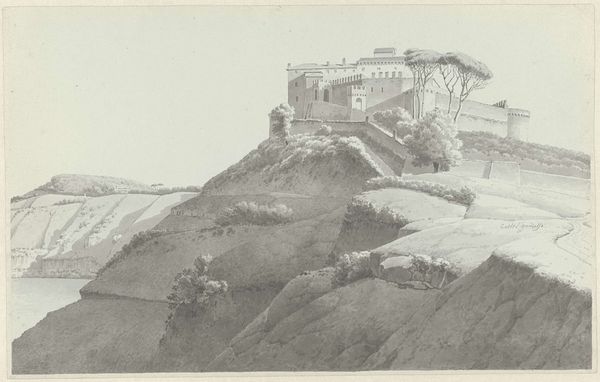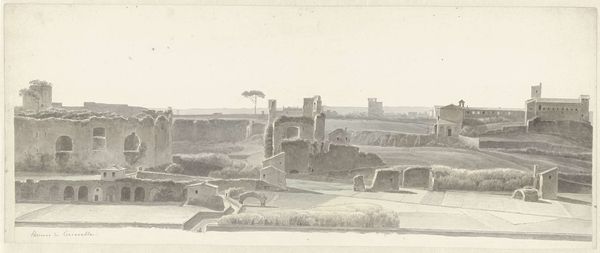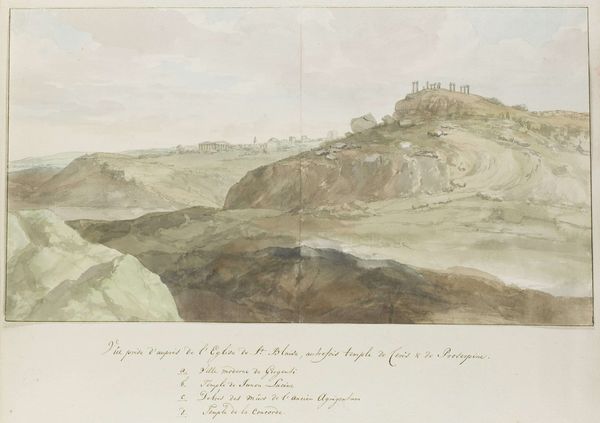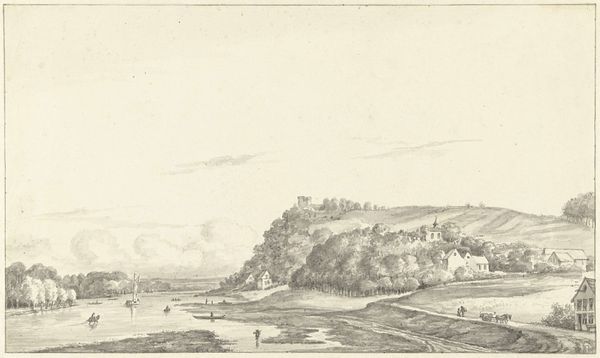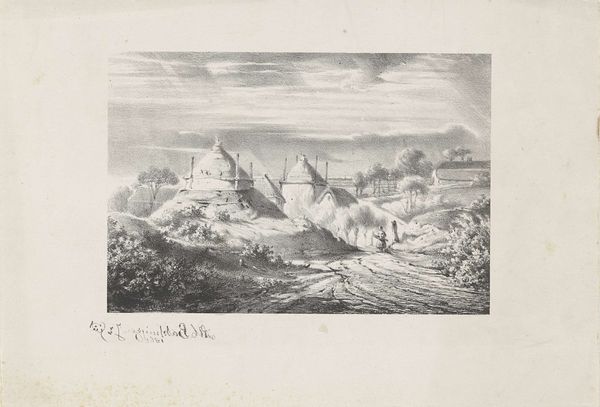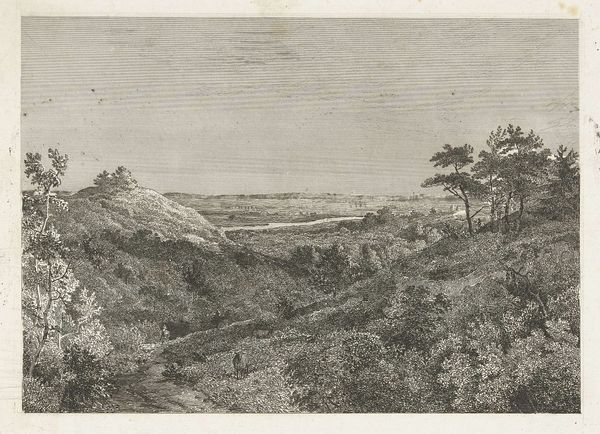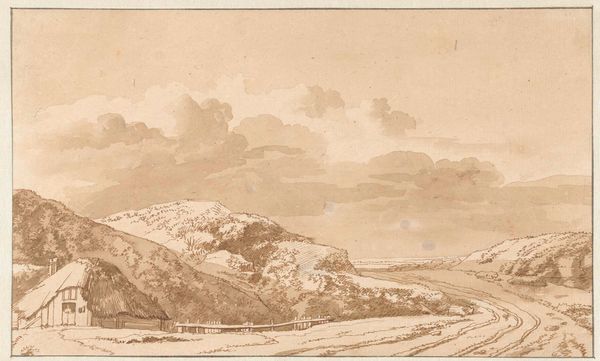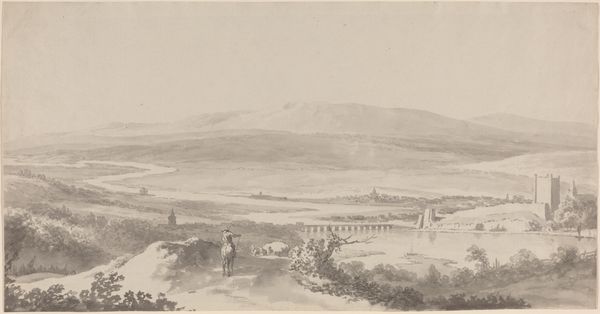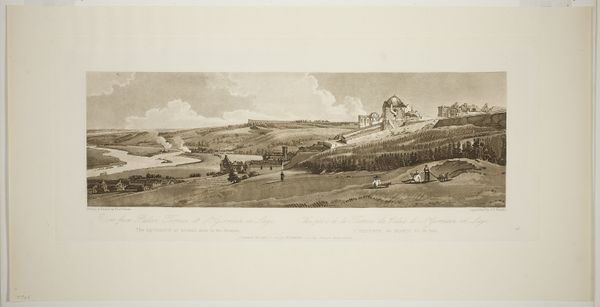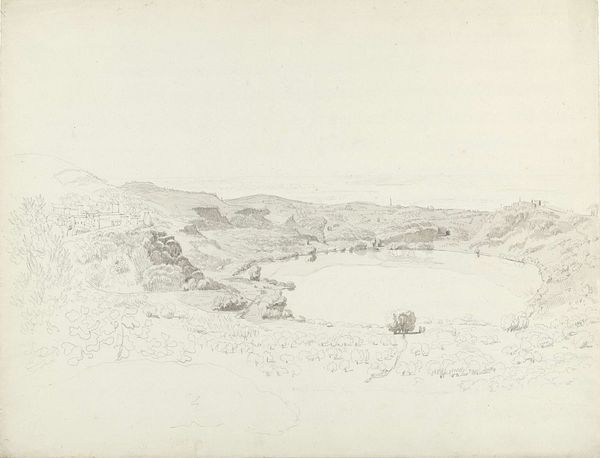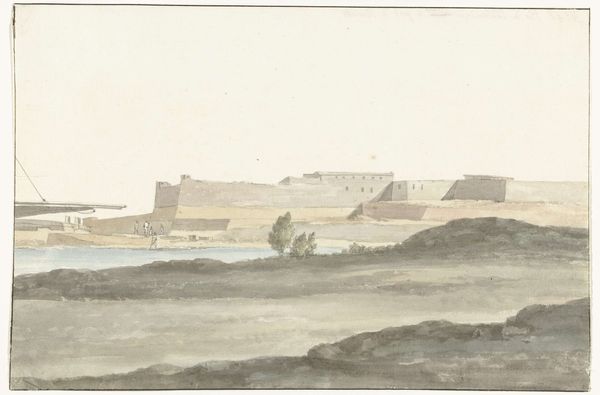
drawing, pencil
#
drawing
#
neoclassicism
#
landscape
#
romanticism
#
pencil
#
cityscape
Dimensions: height 207 mm, width 516 mm
Copyright: Rijks Museum: Open Domain
Editor: This is Josephus Augustus Knip's "Landscape around Albano Laziale," a pencil drawing from around 1809 to 1812. It's so interesting to me how he balances what feels like Neoclassical detail with a kind of Romantic vastness. What draws your eye when you look at this piece? Curator: It's a fascinating intersection, isn’t it? Knip’s strategic use of line, combined with the panoramic view, offers us a space to consider landscape not just as scenery, but as a stage upon which power, history, and social narratives are played out. Consider the crumbling architecture – what stories do you think it tells about the shifts in power that happened in that region during this period? Editor: I guess the ruins speak to that feeling of empires collapsing, of history leaving its marks on the land. Do you see the city here as being romanticized? Curator: To simply see the landscape as romanticized would mean to ignore the sociopolitical complexities embedded within the artwork. The inclusion of classical architectural elements prompts us to ask questions about colonialism, its lasting impact, and how these power structures intersect with our understanding of identity and place. The pencil strokes remind us to acknowledge labor – who benefits, and who suffers. Do you think Knip fully reckoned with all these elements in his time? Editor: It’s hard to say. I can see how tempting it is to maybe overlook those deeper contexts and just appreciate the aesthetic beauty of the landscape. But you're right, thinking about colonialism, power dynamics... it definitely changes how I see it. Curator: Precisely. The beauty shouldn't be consumed passively. By questioning what stories are prioritized and what perspectives are excluded, can we engage in art as an act of critical consciousness and hopefully disrupt traditional interpretations. It pushes the boundaries of how we understand not just this landscape, but our relationship with place and history more broadly. Editor: Thanks, it’s given me a lot to consider and reconsider about landscape art and its relationship with history and power.
Comments
rijksmuseum about 2 years ago
⋮
Knip here drew the Castello Savelli, a medieval fortress atop a hill on the outskirts of Albano Laziale. The castle had been uninhabited since the end of the 18th century, and little by little had fallen into a state of disrepair. What remained was an exceptionally picturesque ruin situated in a splendid landscape.
Join the conversation
Join millions of artists and users on Artera today and experience the ultimate creative platform.

